
In addition to our personal travels, our semester program includes three architectural study tours throughout the diverse regions of Finland. A few months ago, we reported on our excursion to the Arctic Circle.
Here, we present to you our adventure through the deep woods of Finland’s eastern Lakelands, led by our history professor Sirkkaliisa Jetsonen, an accomplished author of Finnish architecture, and a celebrated expert on all things Alvar Aalto.
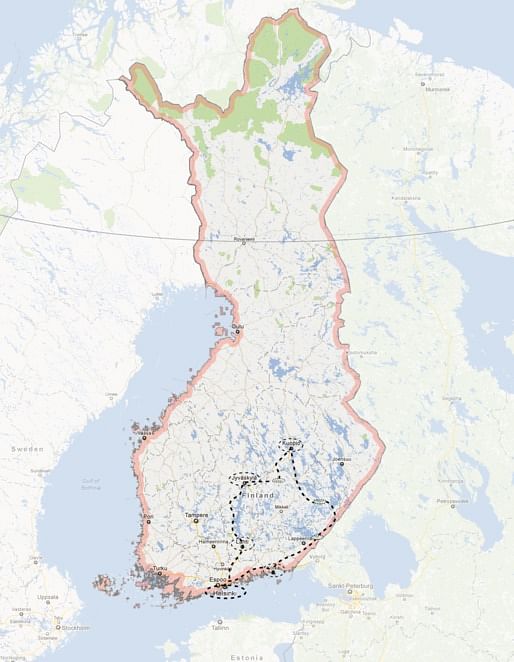
Two weeks ago, the eight of us crammed into a van with Sirkkalissa and set forth on our non-stop 3-day adventure
The Finnish Lake District is a hilly, forest-covered landscape dominated by beautiful eskers and sinuous drumlins. The innumerable lakes, about 55,000 of them, (there is no Finnish consensus as to what constitutes a lake, so there are nearly 200,000 if you count those narrower than 200 meters), were long ago carved out by glaciers and make up about 25% of the landscape. It is a remote area with low population density, but not without world-class architecture. Indeed, this area was the birthplace and patria of Alvar Aalto, and his hometown of Jyväskylä claims more Aalto-designed buildings than any other city in the world.
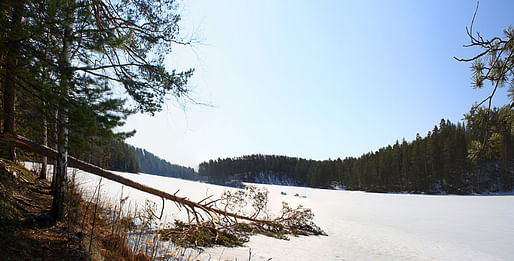
Though most of the lakes are remote and untouched, thousands of Finns have summer homes and cottages out here.  The lakes have historically served as the primary means of transport in this area. Today, it still remains a vital tool for Finland's logging industry.
The lakes have historically served as the primary means of transport in this area. Today, it still remains a vital tool for Finland's logging industry.
We wove our way through the watery and wooded landscape seeing not just Aalto, but the works of other Finnish legends including Juha Leviskä, Arto Sipinen, Kristian Gullichsen, and contemporaries, Lahdelma & Mahlamäki Architects, Heikkinen-Komonen, Kimmo Lintula Architects, and Juhani Pallasmaa. In all of these examples, there is a strong and self-evident connection to the woods, to the lakes, and to the overall Finnish sensibility that we have come to appreciate and recognize off the bat. Unlike Helsinki, where snow has all but melted along the Baltic Sea, the Lakelands still showed remnant signs of winter, and most of the Lakes were still frozen over. Here are a few of the things we saw.
Olavinlinna Castle, a 15th-Century Swedish defense fortress used for protection from Russians along a vital lake trade route. Very close to the Russian border, this is the Northernmost medieval stone fortress still standing in the western world.
Alvar Aalto
As with anywhere in Finland, Aalto has left his mark.
Church of the Cross - Lahti, Finland, 1978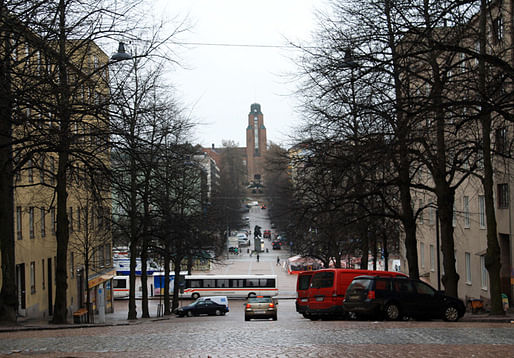 Even on a gloomy and drizzly day like this one....
Even on a gloomy and drizzly day like this one....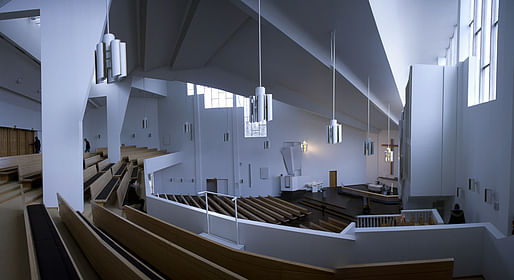
Aalto could channel natural light to create a space like this. It was wonderful. See below for a video recording of the space as someone practiced the organ. The acoustics were outstanding.
The main vestibule space. The square windows form the 'cross,' of which the church gets its name. 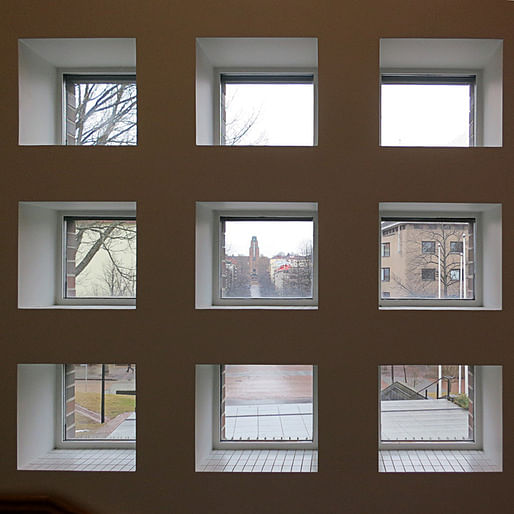
Looking back out into the wet city of Lahti.
Säynätsalo Townhall - Just outside Jyväskylä, FInland, 1949-52 Perhaps one of the most famous views of an Aalto work. Aalto was not happy with how the egress stairs to the left turned out, so in all of his photographs from this vantage he would cover it up in the photo by pasting on a branch, as one would do in world without PhotoShop.
Perhaps one of the most famous views of an Aalto work. Aalto was not happy with how the egress stairs to the left turned out, so in all of his photographs from this vantage he would cover it up in the photo by pasting on a branch, as one would do in world without PhotoShop.
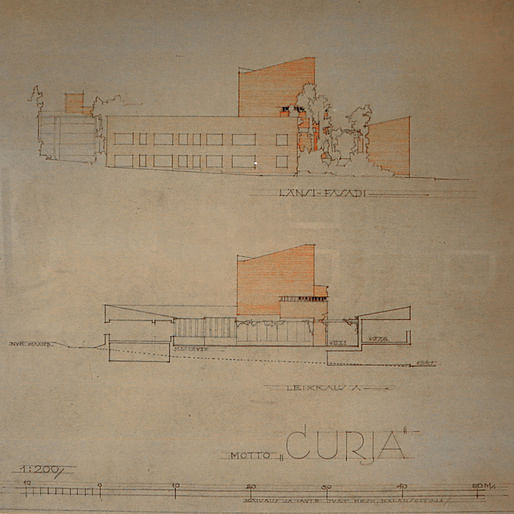 Aalto Section
Aalto Section He was a playful man.
He was a playful man.
Study perspective of the main council room Aalto often uses a variety of floor materials to delineate use. Here, he applies brick to the flooring and benches around the windows. Notice the heaters tucked under the brick benches, they warm the area for window-side sitting.
Aalto often uses a variety of floor materials to delineate use. Here, he applies brick to the flooring and benches around the windows. Notice the heaters tucked under the brick benches, they warm the area for window-side sitting.

Site model study of Säynätsalo Island, where Aalto also designed the master plan 
Lamp detail in small library in Säynätsalo Town Hall. His library space always use primary and secondary lighting strategies.
Jyväskylä University, 1955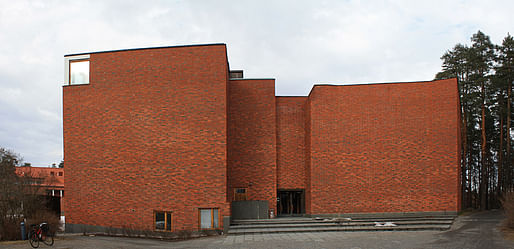
Quintessential severe brick façade of Aalto in his red brick period. 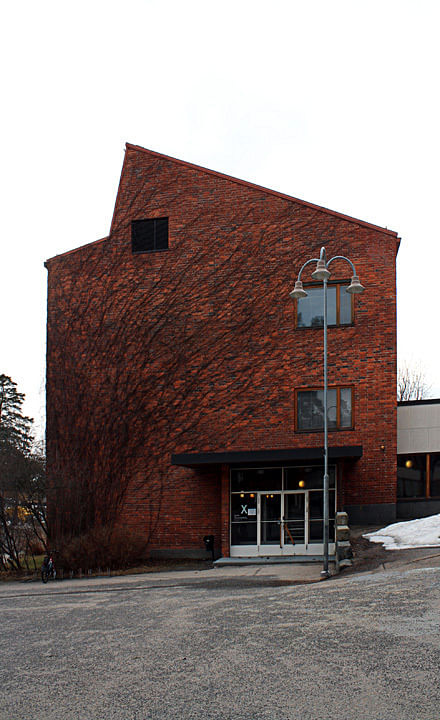
"We should work for simple, good, undecorated things" and he continues, "but things which are in harmony with the human being and organically suited to the little man in the street." - Aalto in 1957, speech in London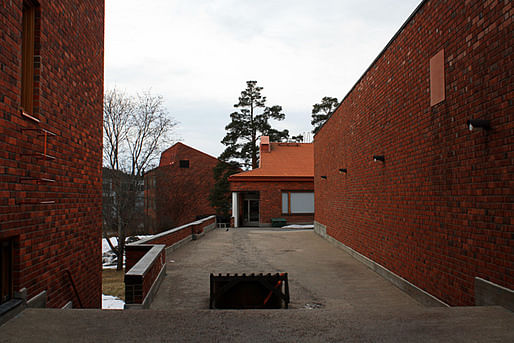 The buildings of the university encircle a large open sport field, and in between they create soft, intimate pedestrian paths, always with a unique terminating view.
The buildings of the university encircle a large open sport field, and in between they create soft, intimate pedestrian paths, always with a unique terminating view.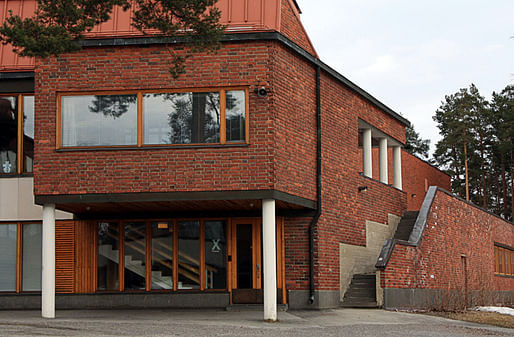 The charming clunkiness of Aalto... International Style in his brick period
The charming clunkiness of Aalto... International Style in his brick period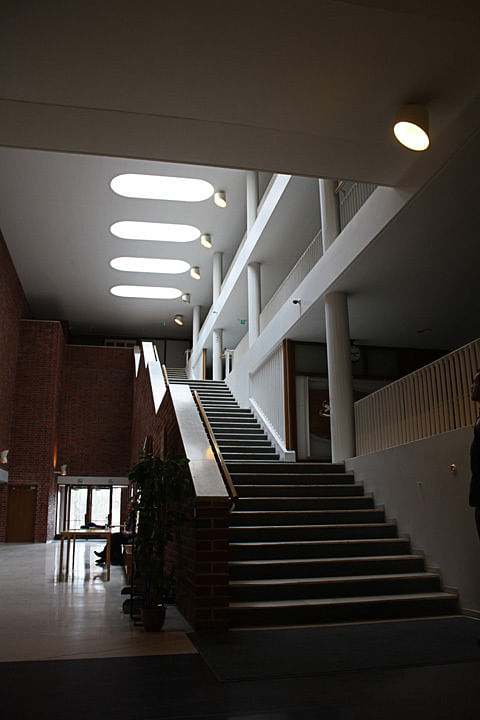 Interior of main University building. Aalto was notorious for his staircases. In his public buildings, he often used many more stairs than were necessary. In most of his works, in fact, the most important spaces all require the use of stairs as to create a heightened sense of sacral procession...
Interior of main University building. Aalto was notorious for his staircases. In his public buildings, he often used many more stairs than were necessary. In most of his works, in fact, the most important spaces all require the use of stairs as to create a heightened sense of sacral procession... Note, for example the entry into the main auditorium.
Note, for example the entry into the main auditorium. 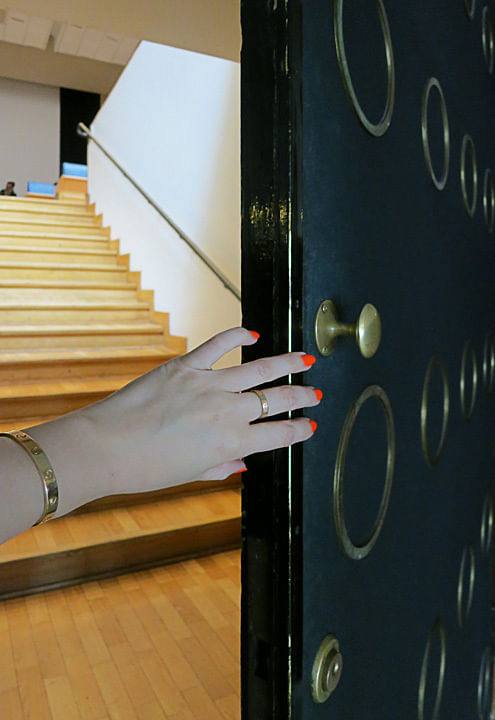
Detail of door to auditorium... a rather un-Aaltoesque door 'handshake' Ceiling detail of main Auditorium. We like ours better (At Aalto University in Helsinki)
Ceiling detail of main Auditorium. We like ours better (At Aalto University in Helsinki)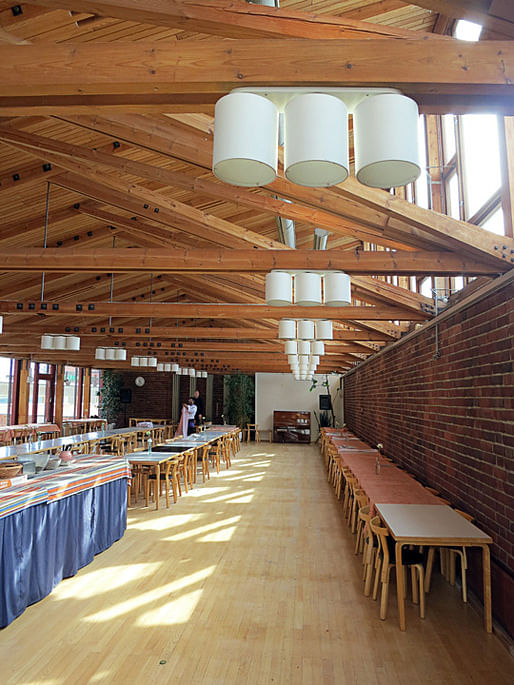 Dining hall of Jyväskylä University. This is a great example of Aalto choosing materials and expertly applying his skill his human scale for a warm and cozy space.
Dining hall of Jyväskylä University. This is a great example of Aalto choosing materials and expertly applying his skill his human scale for a warm and cozy space.

Brick partition of Aalto's Alvar Aalto Museum. The fact that he designed his own museum is quite hilarious.
Vuoksenniska Church (Church of 3 Crosses), Vuoksenniska, Finland 1958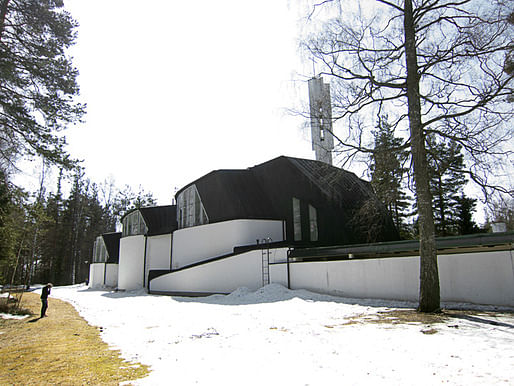
This gem of a church is just as Aalto was departing from his red brick period and moving back to white (eventually he would move to marble). It is notable for its use of 3 nave spaces that can be partitioned off by 2 large folding walls.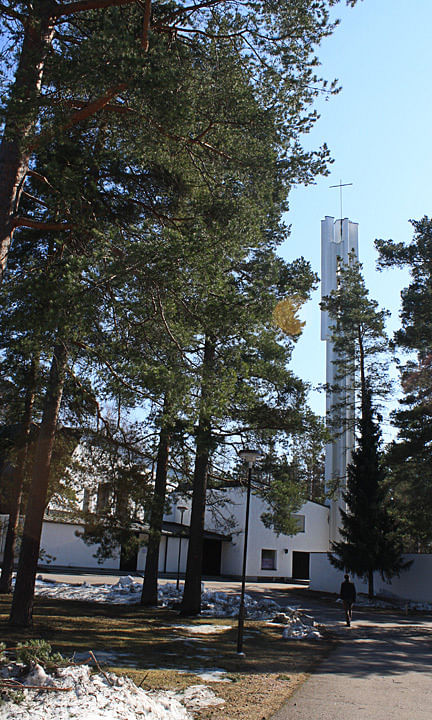
It is nestled between the trees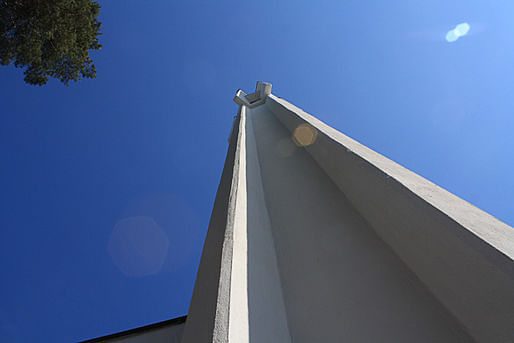
The belfry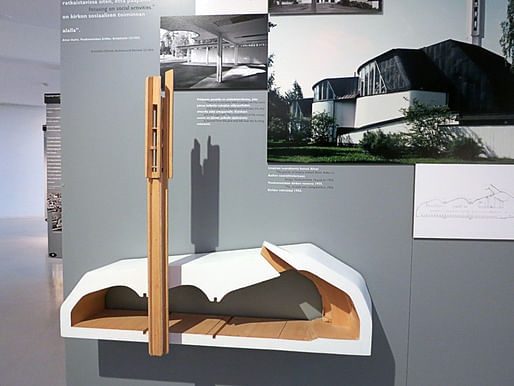
Model of the church in the Alvar Aalto Museum in Jyväskylä. Note the 3 spaces and the 2 channels in the ceiling for the wall partitions. Also the sculpted skylights.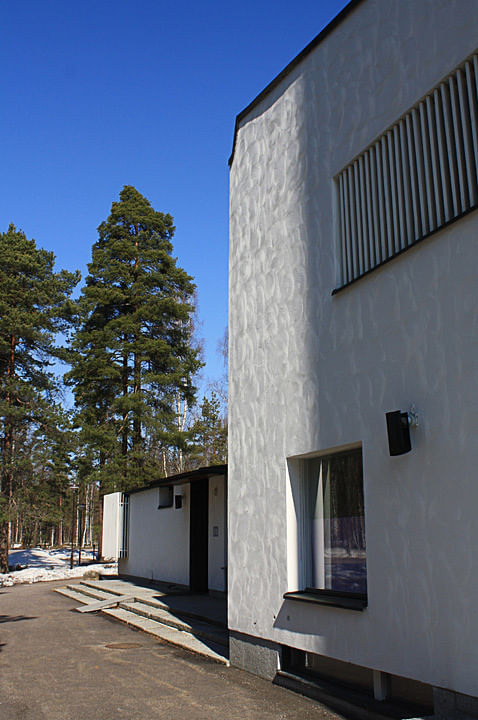
Technique for the stucco application creates a glimmering water and snow-like effect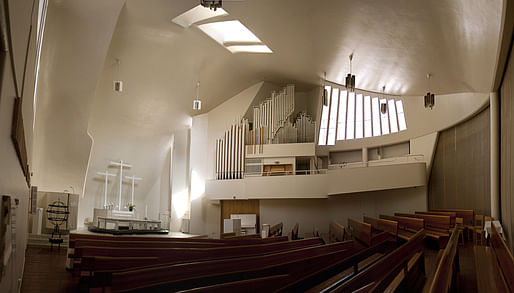
Panorama of front bay, altar, and organ.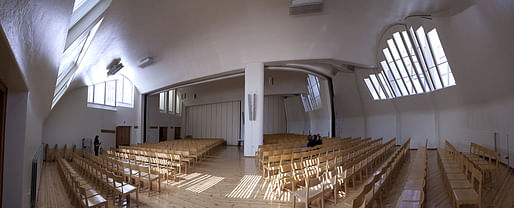 Panorama of back two bays. Note the closed front partition. With this design, one can use the church for both intimate uses and larger events.
Panorama of back two bays. Note the closed front partition. With this design, one can use the church for both intimate uses and larger events. Detail of partition channel, heating and ventilation grills, and windows. Free-form and sculptural.
Detail of partition channel, heating and ventilation grills, and windows. Free-form and sculptural. ...For all you orthodox Modernists... Aalto wasn't afraid to use baseboard moulding. In fact, he almost always did.
...For all you orthodox Modernists... Aalto wasn't afraid to use baseboard moulding. In fact, he almost always did.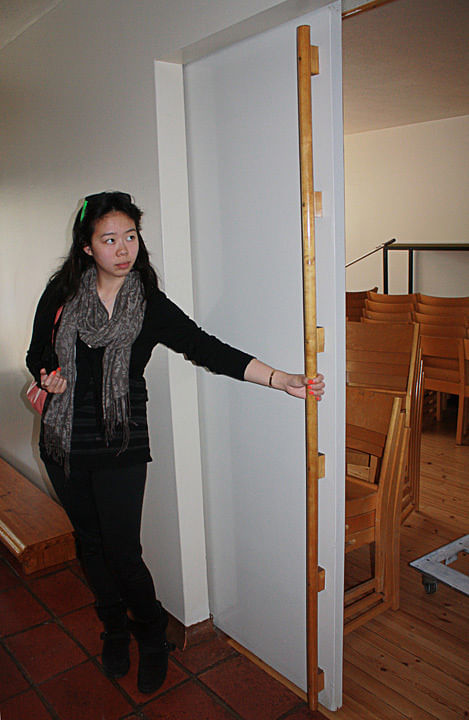
A total work of art, he designed everything down to the last detail
The quintessential Aalto handle.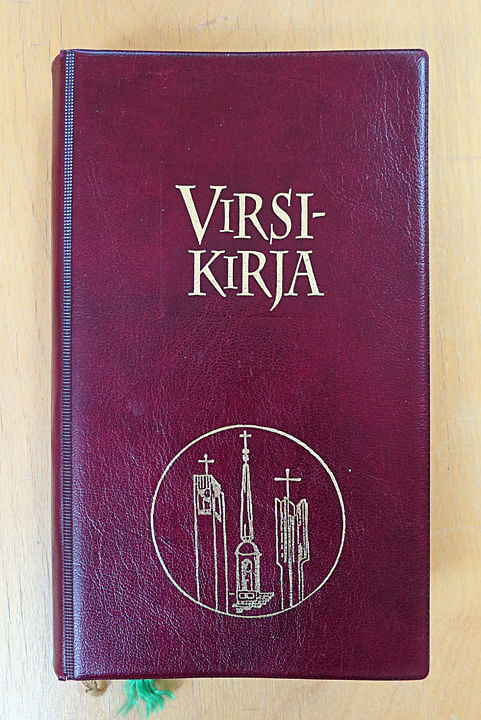 Custom bible design.
Custom bible design.
Aalto Signage...
Most Aalto buildings have a plaque of his signature. Sometimes out in the open, sometimes hidden and tricky to find....notice how the ones from before late fifties are brick, and those after are when he is moving towards his white period.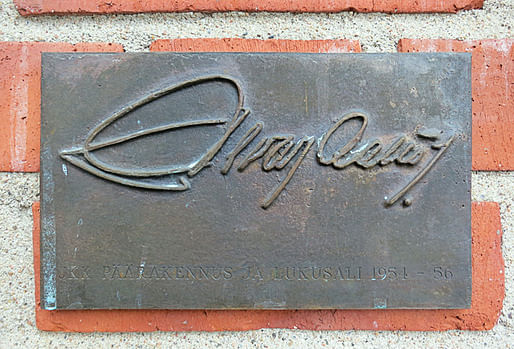


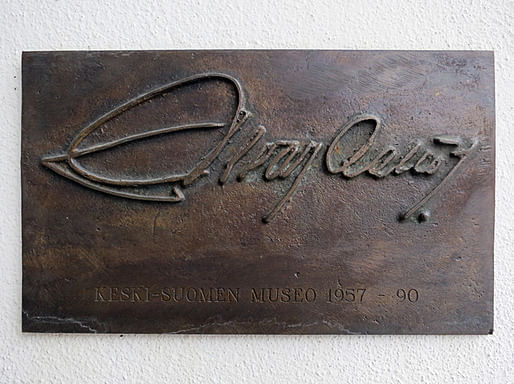
Juha Leviskä
Männistö Church, Kuopio, FInland, 1992
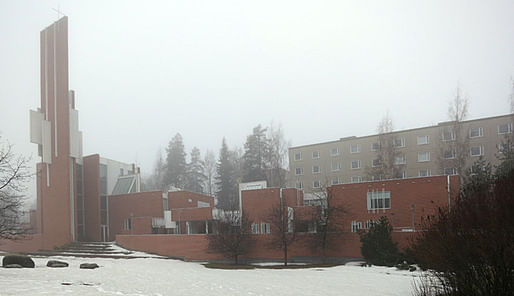
We approached this beautiful church on a foggy morning

Leviskä's churches often apply a circulation strategy that forces the user to meander around the building before entering. He also loves the orthogonal use of planes.
As one turns moves about the church to enter, the planes create a dramatic reveal. The fog heightened this effect. The planes give a diffused and ethereal light against the altar. The planes are painted with light strips of subtle coloring, which is reflected by the sun. Again, no sun outside, but beautifully captures the light regardless on the interior. Also the iconic Leviskä lamps.
The planes give a diffused and ethereal light against the altar. The planes are painted with light strips of subtle coloring, which is reflected by the sun. Again, no sun outside, but beautifully captures the light regardless on the interior. Also the iconic Leviskä lamps. Like Aalto, a total work of art. He designs everything.
Like Aalto, a total work of art. He designs everything.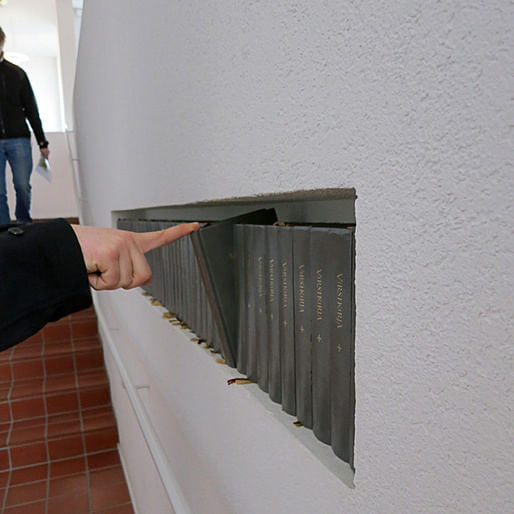
"Architecture is closer to music than to the visual arts. To qualify as architecture, buildings, together with their internal spaces and their details, must be an organic part of the environment, of its grand drama, of its movement and of its spatial sequences. To me, a building as it stands, 'as a piece of architecture' is nothing. Its meaning comes only in counterpoint with its surroundings, with life and with light." Leiviskä, A+U, April 1995
Kimmo Lintula Architects
Sibelius Concert Hall - Lahti, Finland, 2000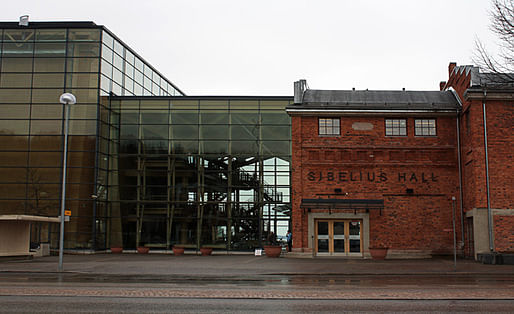
This glass and wood addition to a historic building holds a 1,200 person concert hall with some of the best acoustics in Finland. 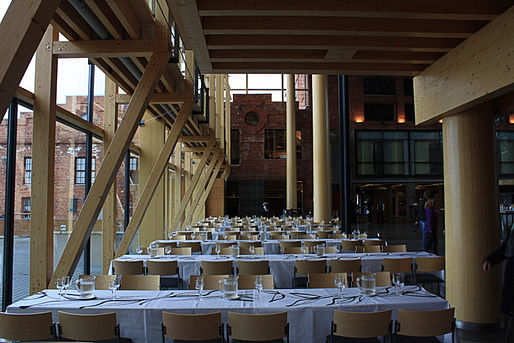
Interior of café area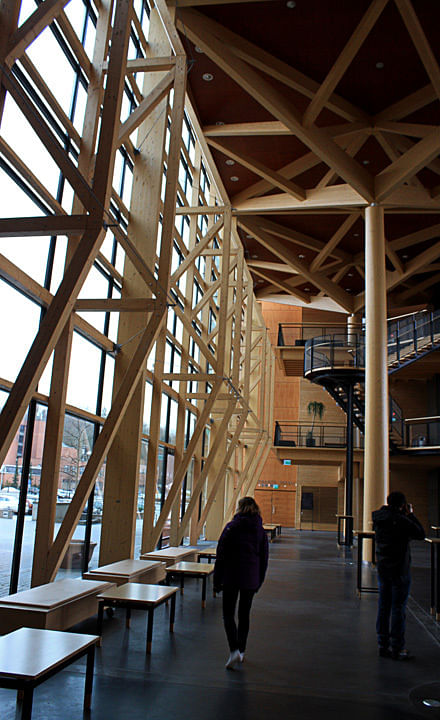
Main foyer - tree-like columns and vertical wood framing give the interior a strong warmth for such a large open space.
Lahdelma & Mahlamäki Architects
Lusto - Finnish Forest Museum, Punkaharju, 1994  This was one of the first large-scale buildings in Finland permitted to use wood as a primary exterior material
This was one of the first large-scale buildings in Finland permitted to use wood as a primary exterior material 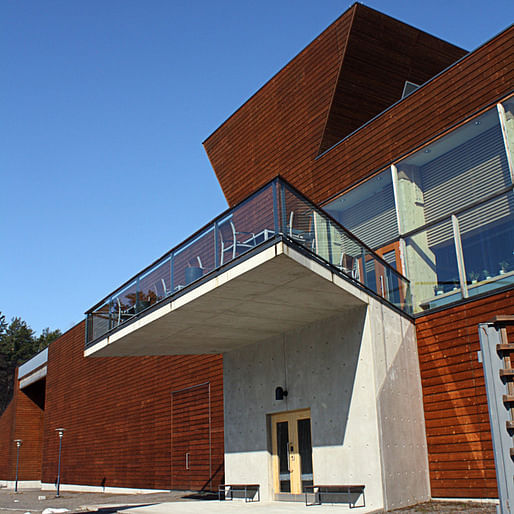 Observation area over the lake
Observation area over the lake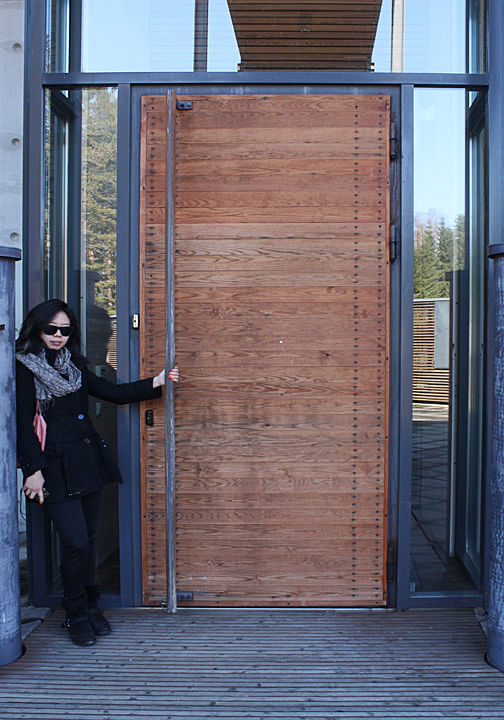
Door detailing The museum itself was amazing. Here, you have the four traditional joints of Finnish wood construction.
The museum itself was amazing. Here, you have the four traditional joints of Finnish wood construction.
Maritime Museum of Finland - Kotka, 2008 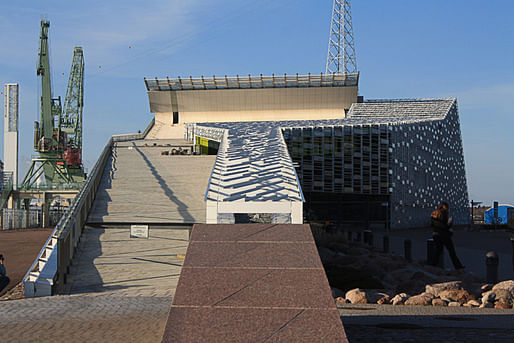 This building a looking to make a large statement for this small industrial city. They were hoping for a similar Bilbao Effect to draw tourism. The concept of the architects was to create a large wave coming in off the Baltic Sea.
This building a looking to make a large statement for this small industrial city. They were hoping for a similar Bilbao Effect to draw tourism. The concept of the architects was to create a large wave coming in off the Baltic Sea. 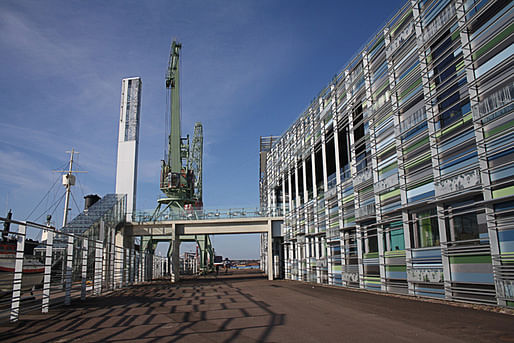 The double skin cladding hoped to make reference to the industrial aesthetics of the harbor.
The double skin cladding hoped to make reference to the industrial aesthetics of the harbor.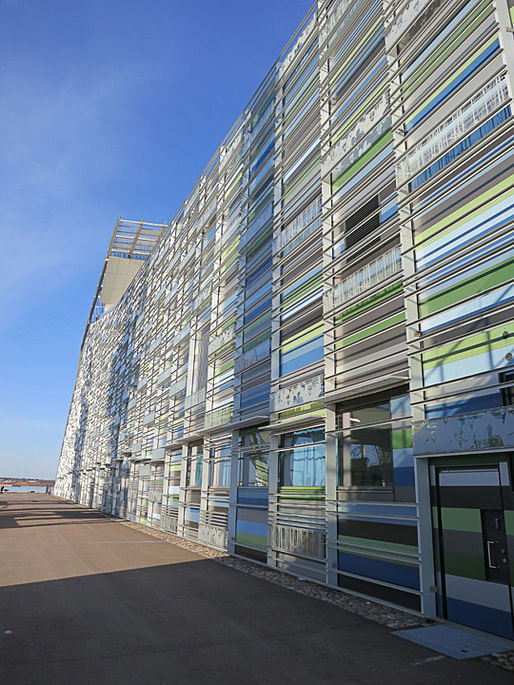
A series of colored fiber cement, with an external curtain of metal rods and screen printed glass.

A nice moment in the entry space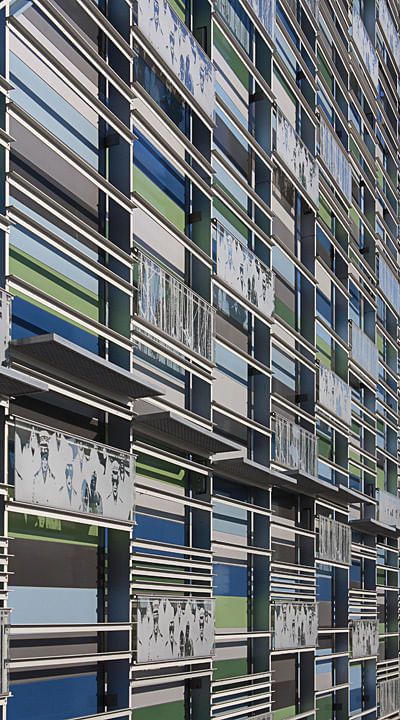
Detail of the façade system.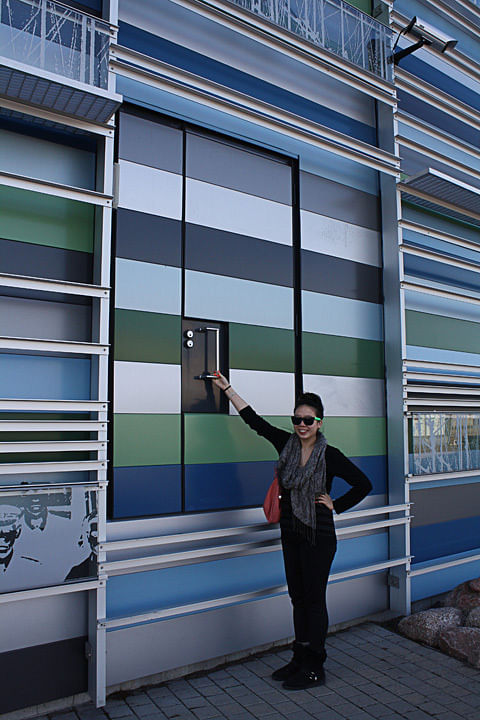
Rear loading area
Much like the Oslo Opera house, the roof is accessible with a large sweeping ramp 
The seating area provided great views both out to the sea, and back towards the city Fantastic interior detailing - benches made with a simple gesture as if someone pulled out one of the wall panels glued it in place.
Fantastic interior detailing - benches made with a simple gesture as if someone pulled out one of the wall panels glued it in place.
Contrasting the busy exterior was clean, warm, and fluid space  Large open hall featured subtle perforations for sound dampening
Large open hall featured subtle perforations for sound dampening
It was also possible to access the roof from inside.
Extra sights and sounds 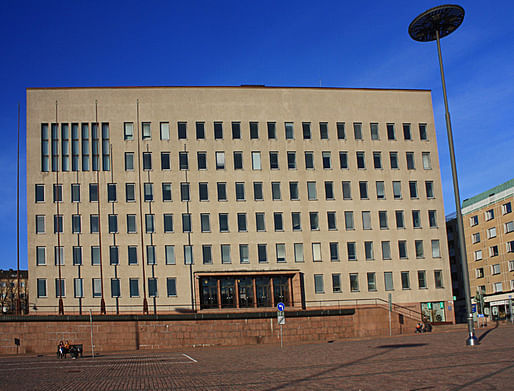
Hardcore 30's Functionalism of PE Blomstedt. A strictly regulated façade right from Corbusier's playbook.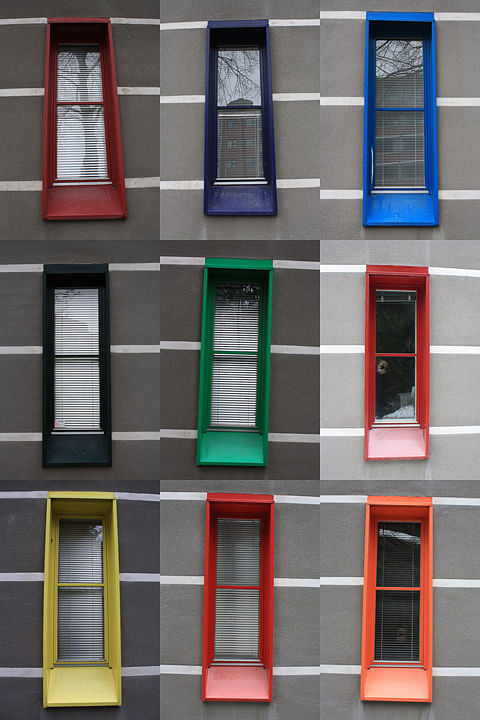
Playful window frames of Juhani Pallasmaa's addition to the Court of appeal, in Kuopio.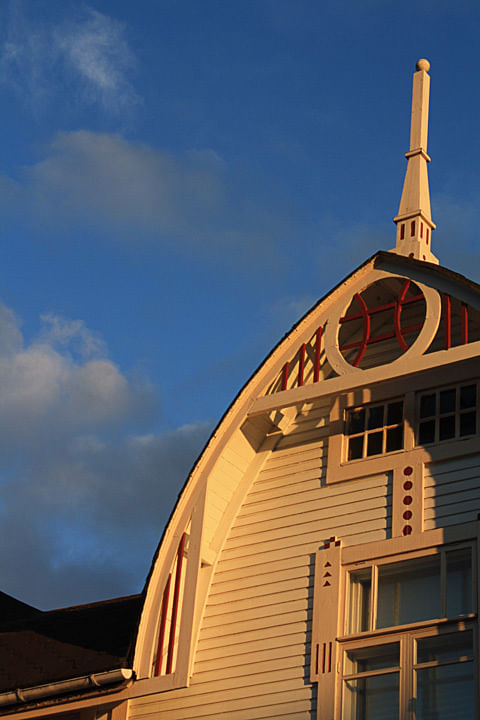
Idyllic Lakeland house in Savonlinna
What a trip.

This work by A.D.Morley & J.A.Wong is licensed under a Creative Commons Attribution-NonCommercial-NoDerivs 3.0 Unported License.
A new adventure begins as we finish one chapter; we hope to share our story with you. We are graduates of Washington University in St. Louis, Sam Fox School of Design & Visual Arts.
1 Comment
an outstanding summary. thank you!
Block this user
Are you sure you want to block this user and hide all related comments throughout the site?
Archinect
This is your first comment on Archinect. Your comment will be visible once approved.